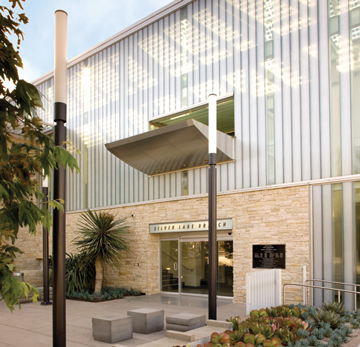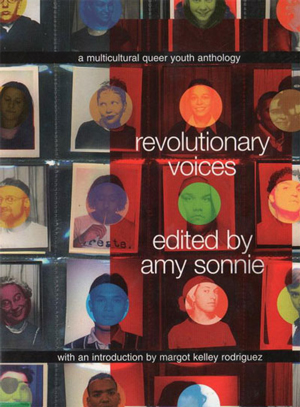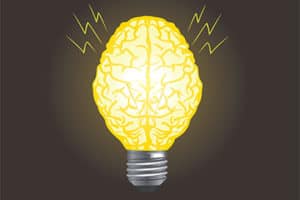
1. Supply and Demand
Several Fox TV affiliates aired a segment June 28 titled: “Are Libraries Necessary, or a Waste of Tax Money?” The answer should have been apparent before the question was even asked: Gate counts and circulation documented that libraries were more in demand than ever, and patrons were not about to surrender their neighborhood research and recreation hubs to budget cuts. Although feisty resistance couldn’t entirely curtail layoffs and trimmed operating hours, boosters managed to keep the vast majority of library doors open to accommodate millions of visitors seeking job-search assistance, storytimes, book clubs and other programming, homework help, or brain candy. Amid ongoing closure threats that dogged the profession through year’s end, there was a notable victory: the November 2 passage of a modest dedicated levy that will reopen Oregon’s Hood River County Library in 2011; voters’ yes vote came six months after they defeated the library’s millage, which closed HRCL’s doors altogether.
2. Natural Disasters Strike
Major earthquakes in Chile and Haiti and a devastating flood in Pakistan destroyed hundreds of libraries in 2010, and at year’s end much of the recovery had barely begun. A January 12 earthquake in Haiti killed over 200,000 in Port au Prince, leaving 1.5 million homeless, and destroying countless cultural institutions. ALA raised funds to rebuild libraries there, including the Bibliothèque haïtienne des Pères du Saint-Esprit, which was founded in 1873 and holds unique resources documenting the history of Haiti. In Peru the earthquake of February 27 extended over six regions, impacting some two million people and killing nearly 300. Over 30% of the 277 public libraries in the regions suffered damage, and a number were totally destroyed. And library damage from July floods (video) in Pakistan are still not totally assessed, but some 250 libraries in the affected region, mostly rural college libraries with some 1.5 million books, were severely damaged or destroyed. Some 2,000 people were killed and 200 million were affected.
 3. Green Libraries
3. Green Libraries
Environmental sustainability continued to gain the attention of librarians throughout 2010, beginning at Midwinter where former U.S. Vice President Al Gore delivered the Arthur Curley Memorial Lecture. Green construction was a growing interest; nearly a quarter of submissions to the 2010 Library Design Showcase were built to meet standards for the U.S. Green Building Council’s LEED Certification program. In June, Milwaukee (Wis.) Public Library completed a 30,000-square-foot green roof on its Downtown Central Library. And library programs and practices have reflected growing interest in the environment, from Middle Country Public Library’s Nature Explorium in Centereach, New York, to Teton County (Wyo.) Library’s Zero Waste Guide, to Dubuque (Iowa) Public Library’s environmental-themed magic show in November, to the Go Green @ your Illinois Library initiative, launched in October by the Illinois Library Association to develop a group of librarians committed to environmental awareness. AL‘s new Green Your Library blog covered sustainability throughout the year.
 4. The Cloud
4. The Cloud
Cloud computing, or IT infrastructures that exist in a remote location–a metaphorical “cloud”–and often give users increased capacity and less need for updates and maintenance, gained more widespread acceptance among librarians in 2010, so much so that the ALA’s Library and Information Technology Association took the topic as its Annual Forum theme this year. While previous discussions in the field centered around whether to embrace the cloud, clearly this year’s discussions shifted to how. At his keynote address at the LITA Forum in Atlanta, OCLC’s Roy Tennant described cloud computing as a “huge paradigm shift.” To illustrate this point, he created a website as he spoke using cloud-based tools (Drupal and Amazon Web Services). Tennant also discussed the commoditization of computing power, available now “on demand, like electricity,” and highlighted some of the benefits to information professionals: outsourced infrastructure, greater flexibility, reduced barriers to innovation, and lower start-up investments.
5. Mass customization
Libraries are leveraging technology to create highly individualized experiences for an ever-growing scope of users. ProQuest CIO Bipin Patel explains it in terms of “cracking the code of mass customization.” ProQuest demoed a new platform at ALA’s Annual Conference in Washington, D.C., a platform whose goal at the outset was to cater to every user’s individual needs. To do so, they underwent extensive user research and created about eight different “personas” against which to test their development across a broad array of potential users.
SirsiDynix’s Director of Product Strategy Jared Oates told AL during an interview at ALA’s Annual Conference that SirsiDynix is looking at ways to be “local all over the world.” SirsiDynix Chief Technology Officer Talin Bingham described a technology platform that makes possible “radical differences between user interfaces.” Looking far ahead into the future, Bingham imagined a time when neural network technology would produce relevant information to would-be searchers before they even begin searching.
6. Hill Rally Changes Virtual Conference
Maybe it’s the growing public advocacy movement that’s getting librarians motivated. Whatever the reason, some 2,000 librarians and library advocates ended their ALA Annual Conference in Washington, D.C., by attending a rally on Capitol Hill. More may be needed after the November 2010 election.
The Libraries Build Communities conference program, which began as a way to help New Orleans after Hurricane Katrina, is now institutionalized, with librarians and vendors taking brush in hand to add a fresh coat of paint or to aid in new home construction at each conference location.
The entire conference experience is being reinvented by making ALA’s two conferences–Annual and Midwinter–more member-friendly, both physically and virtually. A move to reduce a day from both the annual gatherings has to progressed effortless. Those unable to attend in person are now able to get involved from their computers; ALA’s Virtual Conference began with 11 interactive Web sessions, with more to come.
 7. Eyes on Privacy
7. Eyes on Privacy
“We need a new deal on privacy,” said social critic Hal Niedzviecki at ALA’s Midwinter Meeting. He was speaking at the kickoff event for the Office for Intellectual Freedom’s Choose Privacy Week, which was held for the first time May 2–8 with the goal of beginning a national conversation about privacy rights for the digital age. As people share more of their personal details, privacy becomes more commodity than absolute right. “Facebook, for example, is a great social communication tool, but there are compromises and trade-offs with it,” explained OIF Director Barbara Jones. Choose Privacy Week provided libraries the impetus to host speakers, discussions, displays, and programs about privacy.
 8. Library mobile apps on the move
8. Library mobile apps on the move
As library patrons and students rely more and more on their smartphones, public and academic libraries in 2010 were busy creating apps that deliver their programs, collections, and services to the mobile user. Oregon State University Library created two versions of its website, one for smartphone users and another for web-enabled cell phones with a smaller screen. Miami University Libraries offer a mobile web app built in Drupal that gives users access to the catalog, selected databases, social media content, and library staff via text, IM, voice, and email. North Carolina State University Libraries Special Collections crafted an app called WolfWalk, which guides students to 90 different historical spots on campus through a GPS system and supplies images and information on each. Orange County (Fla.) Library System’s Shake It! app provides suggestions for library books or movies when patrons physically give their phones a shake, and Gale has launched AccessMyLibrary apps that allow mobile users to search the Gale databases. Some academic libraries are also beginning to make use of QR codes, which are matrix barcodes readable by smartphones with a camera; the QR codes can link the user to audio or video enhancements of library exhibits, orientation tours, signage, and video tutorials.
9. Authors Love Libraries
Librarians and authors formed a mutual admiration society many years ago, but 2010 saw their love affair grow more passionate as writers came forward not with platitudes about reading but with aggressive advocacy. ALA President Roberta Stevens established “Our Authors, Our Advocates” as her major theme, and invited Brad Meltzer, Sharon Draper, Carmen Agra Deedy, and others to record public service announcements for libraries. The wildly popular Neil Gaiman served as chair of National Library Week, and Toni Morrison delivered a passionate paean to libraries at the ALA Annual Conference in Washington, D.C. ALA also began work on a database of writers who love libraries and are ready and will speak out. W. S. Merwin was named as the Library of Congress’s 17th poet laureate consultant in poetry, and the National Book Festival in September drew a record 150,000 people to the National Mall to meet and listen to a bevy of their favorite authors, including Isabelle Allende, Ken Follett, Scott Turow, and Jules Feiffer.
 10. Censorship
10. Censorship
The first annual Choose Privacy Week, held May 2–8, couldn’t have come soon enough in an era where surveillance devices, hacked databases, and omniscient search engines threaten our right to keep our reading, viewing, and surfing preferences to ourselves. The year was also noted for the removal of two titles from two school districts and a public library. The Stockton, Missouri, school board ordered the withdrawal of The Absolutely True Diary of a Part-Time Indian from the high school curriculum as well as its library. Burlington County, New Jersey, resident Beverly Martinelli succeeded in getting Revolutionary Voices: A Multicultural Queer Youth Anthology pulled from both the Rancocas Valley Regional High School and the Burlington County Library System. Weeks later, the unrelated suicides of several gay teens prompted ALA’s Gay, Lesbian, Bisexual, and Transgendered Round Table to compile a “Speaking OUT Against Bullying” resource list for troubled GLBTQ young people and the people who care about them.
Whatever the challenges, freedom to read boosters could take heart in the vociferous public disapproval expressed when WikiLeaks’ end-of-year release of diplomatic cables led to the Library of Congress blocking the WikiLeaks site for LC staff as well as patrons. In fact, indignant readers who misinterpreted a public service announcement about Banned Books Week in the September 2010 AARP Bulletin flooded ALA’s Office for Intellectual Freedom to scold librarians for celebrating the banning of books.



